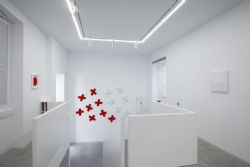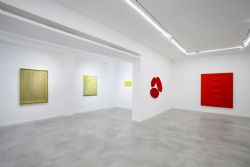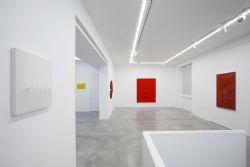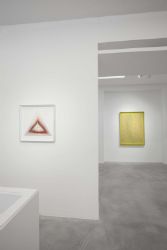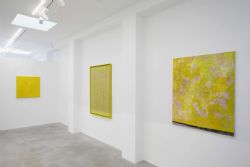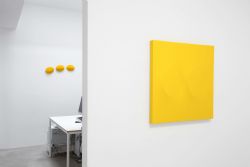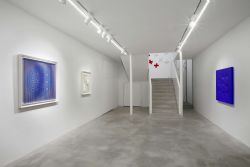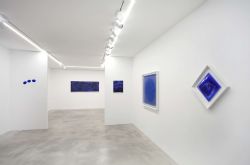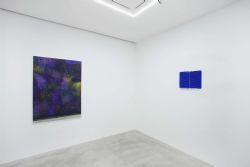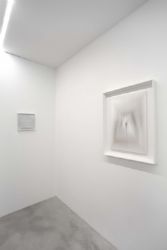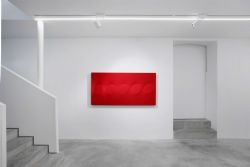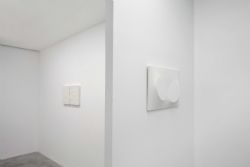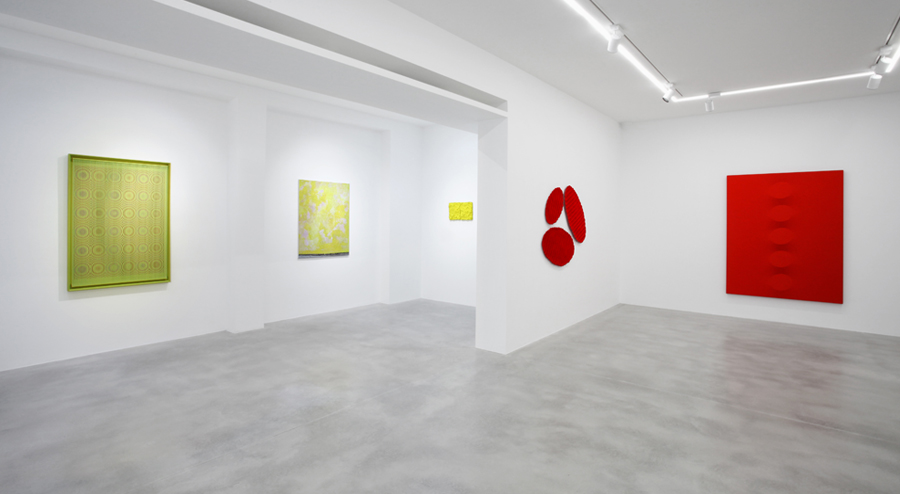
IN THE MATTER OF COLOR
Natale Addamiano, Alberto Biasi, Pino Pinelli, Turi Simeti
a cura di Matteo Galbiati
Milano, Dep Art Gallery
20 maggio – 31 luglio 2020
La galleria è aperta solo su appuntamento
La galleria Dep Art di Milano riprende la sua attività espositiva, con “In the Matter of Color”, una mostra tutta italiana che raccoglie, fino al 31 luglio, circa venti opere di Natale Addamiano, Alberto Biasi, Pino Pinelli, Turi Simeti.
Il progetto nasce nel 2018 per essere esposto a Taipei e Hong Kong nelle due sedi della galleria Whitestone una collaborazione con l’obiettivo di una collettiva che sia espressione dell’arte italiana contemporanea del secondo dopoguerra e che rappresenti diversi gruppi e movimenti. Nel 2019 viene poi esposta al Palazzo del Monferrato di Alessandria e, adesso, torna nello spazio che l’ha concepita.
La galleria sceglie questo progetto per ripartire dopo l’emergenza coronavirus celebrando quattro artisti che da anni, e qualcuno fin dalla fondazione, collaborano con la Dep Art.
Rosso. Bianco. Giallo. Blu. Sono i quattro colori che, attraverso le differenti esperienze dei protagonisti, determinano l’accostamento delle opere della mostra a cura di Matteo Galbiati.
Il colore resta il tema cruciale che si sviluppa, sempre con diverse attitudini, nelle interpretazioni di Natale Addamiano (1943), Alberto Biasi (1937), Pino Pinelli (1938), Turi Simeti (1929), artisti che non hanno mai rinunciato a questo elemento identitario del loro fare.
La mostra è una preziosa occasione per poter osservare l'importanza dei loro racconti che, senza essersi ancora esauriti, sono la miglior attestazione di quell'esperienza dettata da una tradizione che ha, in loro, le sue radici, per determinare, nell'attualità del presente, il valore massimo di un'innovazione che guarda sempre al futuro. Dentro e dietro la materia del colore.
Uniforme o frantumata, monocroma o vibrante, ispessita o dispersa, la materia cromatica conduce a quattro considerazioni che, attraversando le loro storie personali e incrociando le vicende e gli accadimenti artistico-culturali della seconda metà del Novecento, proiettano la loro riflessione, e le conseguenti estetiche, nella piena attualità del nostro tempo, segno di un lavoro instancabile che ancora prosegue oggi e ancora molto ha da dire.
Di Natale Addamiano, I cieli stellati raccontano la sua passione per una pittura tradizionalmente intesa, foriera di un romanticismo lirico, capace di oltrepassare i limiti stessi del paesaggio che provano a raccontare. La poesia ripetuta di Addamiano ripristina un patto di leggibilità con l'opera pittorica offerto allo sguardo dello spettatore che, disabituato dal clamore di certe proposte attuali dell'arte, in lui ritrova la forza evocativa di una pittura che, senza essere accademica, rinnova la propria tradizionale attualità.
Il percorso artistico di Alberto Biasi lo porta ad essere uno dei protagonisti di quel contesto definito come Arte Programmata. Le sue opere si orientano ad una relazione stretta con lo spettatore che in essa rivela un processo di interazione attiva, dinamica e rinnovata nel tempo e nelle diverse circostanze della visione. Percezioni e movimenti, alterazioni o mutazioni, apparenti o virtuali, agiscono come elementi tesi ad agire sulla struttura stessa dell'opera che muta sempre la propria istanza fisica e intuitiva.
Ostinatamente pittore, Pino Pinelli è certamente uno dei più coerenti ed autorevoli maestri della Pittura Analitica. Fin dalla fine degli anni Settanta la sua materia cromatica ha saputo evolversi in atto concreto e agito nell'ambiente, dove il gesto e il segno identificano le tensioni primarie dell'artista. Nella sua pittura, deflagra all'estrema conseguenza l'atto – grandioso, eroico, perfino quasi disperato – di rompere e vincere l'unita del quadro.
Il valore della pittura di Turi Simeti – tra gli artisti presenti nel 1965 nella collettiva Zero Avantgarde di Lucio Fontana – sta nell'aver eletto un elemento primario a segno moltiplicatore della sua azione artistica, salvaguardando l'identità della sua personale intuizione analitica: l'ovale. Anche in lui si definisce l'azione pittorica come fatto concreto che porta l'assoluto silenzio di stesure monocrome ad incontrare il valore e il senso della fisicità oggettuale non solo intuita e lambita concettualmente, ma vissuta con ritmo sulla pelle stessa del dipinto.
IN THE MATTER OF COLOR
Natale Addamiano, Alberto Biasi, Pino Pinelli, Turi Simeti
curated by Matteo Galbiati
Milano, Dep Art Gallery
20 May – 31 July 2020
The gallery is open by appointment only
The exhibition activity starts again at the Dep Art Gallery, presenting “In the Matter of Color”, an all-Italian show with around twenty artworks by Natale Addamiano, Alberto Biasi, Pino Pinelli, Turi Simeti, open until the 31st July.
The project was born in 2018, designed for the two Whitestone’s galleries in Taipei and Hong Kong, an exhibition thought to be an expression of the Italian post-war contemporary art, through different groups and movements. In the 2019 “In the Matter of Color” moved to Palazzo del Monferrato in Alessandria, and now it is back to where it was conceived.
Dep Art Gallery wants to restart after the Covid-19 emergency celebrating four artists who have been collaborating with the gallery for years (and someone even from its very beginning).
Red. White. Yellow. Blue. These are the colors that, through the different artistic experiences of diverse masters of Italian art, determine the pairing of works and dialogue among the artist in the exhibition curated by Matteo Galbiati.
Color is the crucial theme that is developed, always in a different inclination, inspiration, and temperament, in the works of Natale Addamiano (1943), Alberto Biasi (1937), Pino Pinelli (1938), Turi Simeti (1929): artists who have never abandoned this identity and primary element in their practice.
The exhibition is a unique chance to watch and observe the relevance of their stories, that — without being completely consumed yet — are the best statement of a tradition that has its roots in the artists themselves, in order to determine — in the present day— the maximum value of an innovation that always looks to the future. Inside and behind the matter of color.
Concrete and shattered, monochrome or vibrant, optic or evocative, thick or scattered, the chromatic material leads to four considerations that, across their own stories and intermingling the artistic-cultural events and happenings from the second-half of the 1900s, project their own reflection, and resulting aesthetics, into all of today’s relevance, which is the sign of unwavering work that continues today and which has lots to tell and say.
Natale Addamiano’s I cieli stellati, a series of works that represent the epicenter and horizon of his imaginary, describe his passion for a traditionally implicit and expressed painting, the herald of lyrical and profound romanticism, able to surpass the very limits of the landscape they try to pronounce. The poetry Addamiano repeats reinstates a pact of readability with the painting offered to the gaze of the viewer who, unaccustomed to the hype of certain art today, finds the power of imagination and evocation of painting that, without being academic, renews its own traditional pertinence.
Alberto Biasi’s art story led him to be a key player of the “New Trends” in Italian art in the context defined as Programmed Art. His work, in his sense, aims towards a close relationship with the viewer that in it reveals a process of active, dynamic, and renewed interaction in time and in the varying circumstances of sight. Perception and movement, alterations or changes, apparent or virtual, act like innovative elements that strive to acting upon the very structure of the work that constantly changes its physical and intuitive appeal.
A die-hard painter, Pino Pinelli is certainly one of the most coherent and authoritative masters of a kind of painting identified in the field of Analytic Painting. Right from the late 1970s his color material was able to evolve into a concrete act, scattered and present in the environment, where the gesture and sign identify the artist’s primary tensions. In his work what erupts to the extreme consequence is the act – grandiose, heroic, even almost desperate – of breaking and defeating the unity of the “painting.”
The value of the painting of Turi Simeti – one of the artists present in the 1965 group show Zero Avantgarde in Lucio Fontana’s studio in Milan – lies in having elected a primary element as a multiplying sign of his artistic act, safeguarding the identity of his own personal analytical intuition: the oval. The act of painting in him as well is defined as a concrete fact that leads the absolute silent monochrome layering of colors to encounter the value and sense of the object’s physicality, not only intuited and conceptually approached, but experienced with the rhythm of the painting’s very skin.
